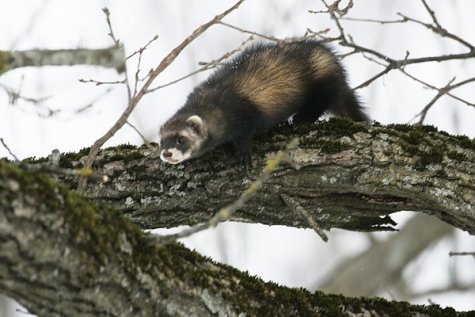All clear
Photo: Arne Ader
Translation: Liis
Polecat
Polecat; Ferret Tuhkur, metstuhkur or tõhk
Our viewers who watched the trout spawning camera surely noticed that in the evenings the movement of fish suddenly lessened. We suspected an otter as well as a mink but there was little snow and the tracks stayed illegible. Otter tracks are larger than those of a mink – killers both, but the otter nearly always eats on the spot and even in great hunger leaves something lying around, the fins or gills. The number of mink is decreasing and they have not been seen in the area, but nonetheless their ties to water bodies are strong, and animals do move.
Now all is clear, the harasser turned out to be a polecat instead. It moves about singly in winter and also inhabits the banks of water bodies. Although a polecat is a good swimmer it does not easily go into water, but after all the temptation was great.
The polecat is a relatively small predator belonging to the mustelids: body length around 40 centimetres, the weight of adult females stays below a kilo, males are just slightly larger. The body seems long due to the short legs, the black-tipped tail, fluffy in winter, is up to 15 centimetres long. It walks slowly, body and tail straight, but if rushed or hunting trots with hunched back. We will talk about the tracks when there is snow onthe ground and the track books readable.
The dense creamy base coat shows well in winter under the brownish-black fur. Blunt muzzle, small eyes surrounded by a dark mask and a lighter edge on the round ears.









